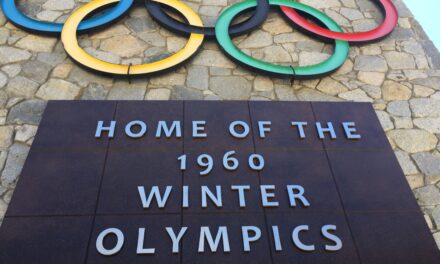- Tahoe’s Nevada Beach Tops the List of Hard-to-Book Campgrounds - 07/17/2024
- Cannabis Watershed Protection Program Cleans Up Illegal Grow Sites - 07/10/2024
- French Fire - 07/05/2024
What is happening with various programs initiated over the years in the U.S. to return to the wild certain animal species that had been endangered or threatened? And do environmentalists tend to be for or against such efforts?
— Susan Adams, Owl’s Head, ME
From the standpoint of species and ecosystem health, limited attempts at predator reintroduction in the United States have for the most part proven very successful. The gray wolf, extirpated by hunters in the Yellowstone region some 90 years ago, is now thriving there in the wake of a controversial reintroduction program initiated in 1995, when the National Park Service released 31 gray wolves into the park’s expansive backcountry. Today as many as 170 gray wolves roam the park and environs, while the elk population—which was denuding many iconic park landscapes in the absence of its chief predator—has fallen by half, in what many environmentalists see as a win-win scenario.
Other reintroduction efforts across the U.S. have also been successful. From the lynx in Colorado to the condor in California to the Black-footed ferret on the Plains, scientists are pleased with how well reintroduced species have taken to their new surroundings. As a result, many conservationists now view the reintroduction of iconic wildlife species as key to restoring otherwise degraded natural landscapes.
“When we kill off big cats, wolves and other wild hunters, we lose not only prominent species, but also the key ecological and evolutionary process of top-down regulation,” says the non-profit Rewilding Institute, adding that the recovery of large native carnivores should be the heart of any conservation strategy in areas where such predators have disappeared. “Wolves, cougars, lynx, wolverines, grizzly and black bears, jaguars, sea otters and other top carnivores need to be restored throughout North America in ecologically effective densities in their natural ranges where suitable habitat remains or can be restored.”
Not everyone is so bullish on wildlife reintroduction programs, despite their success. As for the Yellowstone wolf reintroduction, ranchers operating on private land outside park boundaries still complain about the threat of free-roaming wolves poaching their livestock. In response, the non-profit Defenders of Wildlife has implemented its Wolf Conservation Trust whereby donated funds are channeled toward paying ranchers fair market value for any stock lost to wolf predation. The group hopes the fund will “eliminate a major factor in political opposition to wolf recovery” by shifting the economic burden of wolf recovery from livestock producers to those who support wolf reintroduction.
Some environmental advocates also oppose wildlife reintroductions. One argument is that people have “played God” enough and should stop tinkering even more with wildlife and ecosystems, especially given that the overall long-term impact is always uncertain. And some animal advocates dislike such strategies from a humanitarian perspective: “Reintroduction programs subject wild animals to capturing and handling, which is always stressful for them, and may eventually put them in the line of fire of farmers who are already angry about predator-reintroduction programs,” claims People for the Ethical Treatment of Animals (PETA), adding that, when predators are reintroduced to an area where they have long been absent, prey species tend to scatter and “their lives and behavior patterns are turned upside-down.”
CONTACTS: The Rewilding Institute, www.rewilding.org; Defenders of Wildlife, www.defenders.org; People for the Ethical Treatment of Animals (PETA), www.peta.org.
EarthTalk® is written and edited by Roddy Scheer and Doug Moss and is a registered trademark of E – The Environmental Magazine (www.emagazine.com). Send questions to: earthtalk@emagazine.com. Subscribe: www.emagazine.com/subscribe. Free Trial Issue: www.emagazine.com/trial.













